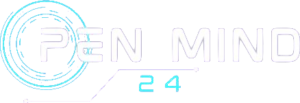Smart Home Beyond the Obvious
The ubiquitous nature of technology, enabling increased connectivity of everything, everywhere, every time and everyone, has transformed the dynamics of today’s smart home industry. The journey of turning tech dreams of yesterday into reality has been unparalleled with networked security cameras, door locks that open with fingerprints, smart light bulbs and smart washing machines. It should come as no surprise that there will be more smart devices for the home than ever, as they provide promising opportunities for businesses to keep up with the trend.
The foray of software automation technologies has been a key building block for business growth and provided a value proposition for all stakeholders. State-of-the-art technologies, such as intelligent automation, big data, blockchain and IoT, have served as a beacon of optimization, customization and customer experience. The trends surrounding intelligent devices are such that the market for smart homes worldwide could generate USD 537.27 billion in revenue opportunities by 2030.
With the integration of AI into smart home networks becoming a prerequisite in the global landscape, the spree of disruptive technologies, including a video doorbell, connected thermostats and smart appliances, has ushered in innovation.
Security Systems on the Horizon
Security systems for smart homes have become a vital cog in preventing break-ins and enhancing monitoring, including enabling customization with extra sensors to detect smoke, carbon monoxide and extreme temperatures. For instance, all kinds of household appliances, such as gas stoves, portable generators and furnaces, can leak carbon monoxide, an invisible intruder; as such, detectors (fire and leak) become invaluable in saving lives.
An uptick in theft, property damage and burglary has furthered the demand for smart home automation devices. According to the State of Safety in America 2023 report from SafeWise, burglaries account for 16% of all property crimes in Texas. The report also notes that security systems and security cameras have garnered popularity in the U.S., alluding to a dip in burglary. The Council of Criminal Justice asserted that the 2024 average reported residential burglary rate was 13% lower than in the preceding year.
These trends have fueled the penetration of the following devices and sensors, such as:
- Smart Thermostat: It adjusts temperature based on room usage and individual behavior, giving you control over the heating and cooling in your home from any location.
- Motion detector: These sensors alert individuals of any movement within the home. Besides, they can be connected to a thermostat to save energy.
- Video doorbell: It has app control and built-in camera functionality, along with two-way audio conversation for enhanced security.
- Smart door locks: Homeowners see smart door locks as theft deterrents on the back of remote monitoring capabilities, biometric authentication, individual passcodes and keyless features.
- Smart household monitors: They can help reduce energy bills by automating systems and providing real-time data on energy usage.
Health Monitoring Meets Smart Home
Smart home technology brands have augmented investments in the integration of technologies into the health sector. For instance, AI-powered smart mattresses have come to the fore to provide a personalized sleep experience and foster health monitoring (through biometric sleep tracking). In April 2025, QREM announced the launch of AI-driven smart mattresses to foster personalized sleep solutions. The company contemplates creating a fully responsive mattress that is in line with the body’s natural form, boosts sleep quality and reduces muscle strain.
Mental health care has taken a giant leap with the advent of virtual assistants and smart software. To illustrate, AI-powered virtual assistants can provide instant support and services for depression and anxiety, while smart security systems can make people with anxiety disorders feel safe. Moreover, smart home systems such as smart thermostats can track sleep patterns and provide a more relaxing home environment.
Culmination
The next half a decade will be replete with smart home apps and devices to enhance security, boost personalization and improve mental health. The prevalence of a slew of companies and individual apps in the smart home market may witness the emergence of new standards to enable different devices from various companies to share a single interface. Tech providers and device makers have years full of opportunities and challenges to stay in the mix.
